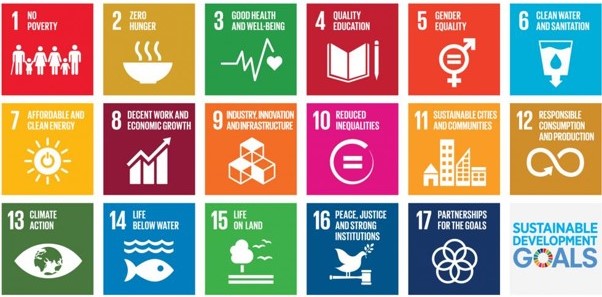The concept of the 'triple bottom line' in business refers to the consideration of not just financial profits, but also the impact on the environment and society. This approach, also known as the Environmental, Social, and Governance (ESG) indicators, provides a comprehensive assessment of a company's sustainability performance. Investors are increasingly prioritizing companies that prioritize sustainability and responsible business practices, as they recognize the long-term benefits and potential for sustainable growth. By aligning their strategies with the Sustainable Development Goals (SDGs) set by the United Nations, businesses can contribute to global sustainable development and track their progress using key performance indicators. Incorporating the achievements of the SDGs into management learning is crucial, as it helps students understand the importance of integrating sustainability into business strategies and inspires future leaders to prioritize responsible practices. Closing the "sustainability gap" requires addressing chronic underfunding, understanding the synergies and trade-offs between different SDGs, and recognizing the role of the private sector in driving positive change. Embracing this complexity in management curriculums will enable students to make informed decisions and contribute to a more sustainable future.
ESG's VS SDG's
The UN Global Compact has developed a set of Environmental, Social, and Governance (ESG) indicators that serve as a framework for businesses to measure and report on their sustainability performance. These indicators provide a comprehensive assessment of a company's environmental impact, social responsibility, and governance practices. From an investment perspective, ESG indicators have become increasingly important as investors are seeking to align their portfolios with companies that prioritize sustainability and responsible business practices. By considering ESG indicators, investors can gain insights into a company's long-term viability, risk management strategies, and potential for sustainable growth. This information allows investors to make informed decisions and allocate their capital to companies that are committed to making a positive impact on society and the environment.

In addition to Environmental, Social, and Governance (ESG) indicators, another important framework for measuring and assessing sustainability performance is the Sustainable Development Goals (SDGs) set by the United Nations. The SDGs provide a roadmap for businesses and organizations to contribute to global sustainable development. These goals cover a wide range of areas, including poverty eradication, quality education, gender equality, clean energy, and responsible consumption and production. To define and measure SDG achievements, businesses can align their strategies and initiatives with specific goals and targets. They can then track their progress by monitoring key performance indicators (KPIs) related to each goal. By doing so, businesses can demonstrate their commitment to sustainable development and showcase their positive impact on society and the environment.
SDG Index:
SDGs are targets set at the country level, making them a macro index. Businesses, on the other hand, focus on their own goals at the micro level by targeting specific markets and operating within them. The actions and decisions of businesses collectively impact a country's performance on key indicators like the SDG Index, highlighting the interplay between microeconomic impacts on the macroeconomy. It is well-known that good policy and education are crucial for improving welfare in this context. Unfortunately, low to middle income countries face challenges in achieving or making progress towards SDG achievements. There is significant heterogeneity across countries and groups of countries, similar to what we observe with other indicators of economic development in underdeveloped, developing, and developed nations.
3 Key factors to close the "Sustainability Gap"
Research on SDG achievements in different countries is increasingly accumulating evidence of a correlation between their ability to progress and key global economic indicators. This highlights the interconnectedness of our economies and environment. It is evident that countries are at different stages of development, with the rich becoming wealthier and the poor facing increasing challenges. If the same trend applies to sustainability, there is a shared responsibility for all countries, near and far, to focus on closing the gap rather than simply achieving goals without meaningful impact. Three key factors emerge as crucial to closing this gap.
Chronic underfunding
To drive significant global changes and achieve the Sustainable Development Goals (SDGs), it is imperative to increase funding in six key priority areas known as "SDG transformations." These transformations serve as the fundamental building blocks for SDG accomplishments and encompass various crucial aspects such as education, gender and inequality, health, well-being and demography, energy decarbonization and sustainable industry, sustainable food, land, water and oceans, sustainable cities and communities, and the digital revolution for sustainable development. To effectively bring about major societal transformations worldwide, substantial investments are required in these areas, particularly at the middle to lower levels of the global economy (Sachs et al., 2019; Nature Sustainability).
Synergies and Trade-Offs
The pursuit of one SDG achievement can have a ripple effect on the progress of other SDG goals, with varying outcomes depending on the country and industry. This creates a complex issue that requires national policy and educational initiatives to address. As a result, the interactions between different SDGs will shape the pathways to achieving overall SDG success (Soergel et al, 2021; Pedecini et al., 2019; Kroll et al., 2019).
Private Sector Contribution to inter-play
Consider the rapid shift towards sustainable practices in the car industry, particularly in Europe. While the electric car industry is often seen as a solution to reducing pollution, it's important to examine its global supply chain, including the extraction of lithium and other components, which can lead to issues of land degradation. Additionally, due to its large market size, the transition to greener cars directly influences national economies on a macro scale. Understanding the positive and negative impacts of this transition can be a complex task, requiring careful definition and measurement.
Why use SDG Achievements in teaching and learning?
We have very standard business models for decision making across all schools. Students already find that complex enough to begin with so the question is how do we bring the complexity of management decisions and the even greater complexity of the reality of those decisions in the real world?
Recent studies on sustainability are presenting intriguing arguments regarding policies that could potentially lead to societal collapse. Researchers are developing and testing models that highlight the risks within a decade's timeframe, including the impact of globalization and fractures in politics and society. As business schools navigate these discussions, they may face normative pressures and challenges related to the sensitivity surrounding key issues such as SDG achievements and the broader structures that support them.
From the perspective of professional educators, it is crucial to provide guidance on distinguishing between acceptable and unacceptable behaviour. Business education has long embraced the concept of Corporate Social Responsibility (CSR), while business ethics continues to gain prominence at all levels of educational programs. As educators, it is our responsibility to navigate these discussions and foster a deeper understanding of ethical practices in the business world.
Business Success
Understanding their business's contribution to SDG achievements helps future entrepreneurs succeed. Incorporating SDGs in management learning emphasizes the importance of sustainability and responsible practices. This understanding enables entrepreneurs to make informed decisions for long-term success, identify innovation opportunities, attract socially conscious customers, and build strong partnerships. Prioritizing SDG achievements allows entrepreneurs to create financially thriving businesses that make a positive impact on society and the environment, with education playing a key role in their success.
Being in a better position on the job market
Teaching students through sustainable development goal achievements can greatly enhance their employability post-higher education. By incorporating the achievements of the Sustainable Development Goals (SDGs) into management learning, students gain a deeper understanding of the importance of integrating sustainability into business strategies. This not only equips them with the knowledge and skills to address environmental and social challenges, but also inspires them to become future leaders who prioritize responsible practices. Employers are increasingly seeking candidates who can contribute to global sustainable development, and by demonstrating their understanding and commitment to the SDGs, students become more attractive to these employers. Furthermore, by aligning their strategies with the SDGs, businesses can track their progress using key performance indicators, providing tangible evidence of their sustainability efforts. Combining these practices business simulation game sessions can enhance these benefits to both student and teacher. Overall, teaching students through the lens of sustainable development goal achievements not only prepares them for the challenges of the future workforce, but also enhances their employability in a world that increasingly values sustainability.
The financial relationship between the natural environment and the concept of the 'triple bottom line' in ESGs is a concept with long-term implications. In the short run, it may seem profitable to prioritize unethical practices. However, operating at the microeconomic level, businesses are often susceptible to 'short-sightedness', which refers to a narrow focus on short-term results at the expense of long-term interests. The pressure to deliver immediate performance can lead investors to prioritize quarterly earnings over long-term strategy, fundamentals, and value creation. In the past, the idea of 'long-term value creation' was often considered as part of CSR in business curriculums. Today, concepts taught under CSR have become fundamental to decision-making in all areas of business, including R&D, Finance, Marketing, and HR.
Why use SDG Business Simulations?
In a dynamic business simulation game, student teams come together to form a board, where each member assumes the role of a director in a key function. Through this interactive experience, they engage in discussions about Sustainable Development Goal (SDG) achievements, simulating the progress made over years of business operations within a matter of hours. This immersive exercise is made possible by the data generated by the simulation, providing a realistic and practical learning environment.
Meanwhile, teachers have the unique opportunity to design assignments and tasks that reflect the ebbs and flows of the markets over time. By closely monitoring student input, they can guide their decision-making processes and foster critical thinking skills. Edumundo business simulations effectively compress time, allowing students to experience the real-world consequences of their business decisions - both in the short and long term. The competitive nature of the game also encourages collaboration among players, highlighting the importance of teamwork and strategic planning.
Incorporating business simulations into the curriculum proves to be an ideal teaching resource for delivering content related to sustainability in business education. It offers a hands-on approach that not only enhances students' understanding of the subject matter but also equips them with the skills needed to navigate the complexities of sustainable business practices. By immersing themselves in this simulated environment, students are better prepared to tackle the challenges of the future workforce while making a positive impact on society and the environment.
In conclusion, universities have a unique opportunity to actively contribute to the national and global achievement of the Sustainable Development Goals (SDGs) by incorporating them into their academic institutions and business education. By aligning their strategies with the SDGs, businesses can contribute to global sustainable development and track their progress using key performance indicators. It is crucial for students to understand the importance of integrating sustainability into business strategies and to prioritize responsible practices. Closing the "sustainability gap" requires addressing chronic underfunding, understanding the synergies and trade-offs between different SDGs, and recognizing the role of the private sector in driving positive change. By embracing the complexity of these issues and incorporating them into management curriculums, universities can prepare future leaders to make informed decisions and contribute to a more sustainable future.



.png?length=300&name=unnamed%20(11).png)
.png?length=300&name=unnamed%20(7).png)
.png?length=300&name=unnamed%20(8).png)
.png?length=300&name=unnamed%20(6).png)

.png?length=300&name=unnamed%20(10).png)
.png?length=300&name=unnamed%20(5).png)
.png?length=300&name=unnamed%20(9).png)
.png?length=300&name=unnamed%20(4).png)
.png?length=300&name=unnamed%20(2).png)
.png?length=300&name=unnamed%20(1).png)
.png?length=300&name=unnamed%20(3).png)
.jpg?length=300&name=unnamed%20(2).jpg)





.png?length=300&name=loughborough-university-logo%20(small).png)





